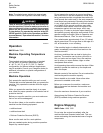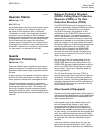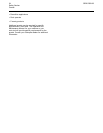
SEBU7858-03 29
Safety Section
Parking
After the machi
ne is parked and the parking brake
is engaged, allow the engine to run for two minutes
before shutdown. This allows hot areas of the engine
to cool gradua
lly.
i03370980
Parking
SMCS Code: 7000
Park the machine on a level surface. If you m ust park
on a grade, chock the machine's wheels with suitable
chocks. Take into account the following:
•
tire size
•
machine weight
•
ground conditions
Apply the service brake in order to stop the
machine. Move the transmission control (lever) to
the NEUTRAL position. Move the throttle control to
the LOW IDLE position.
Engage the parking brake.
Lower all equipment to the ground. Activate any
control locks.
Stop the engine.
Turn the engine start switch to the OFF position and
remove the engine start switch key.
Turn the battery disconnect switch to the OFF
position. Remove the disconnect switch key if you
do not operate the machine for an extended period
of time. This will prevent drainage of the battery. A
battery short c ircuit, any current draw from certain
components, and vandalism can cause drainage of
the battery.
i02780235
Slope Operation
SM
CS Code: 7000
Machines that are operating safely in various
ap
plications depend on these criteria: the machine
model, configuration, machine maintenance,
operating speed of the machine, conditions of the
t
errain, fluid levels, and tire inflation pressures. The
most important criteria are the skill and judgment of
the operator.
Awelltrainedo
perator that follows the instructions
in the Operation and Maintenance Manual has
the greatest impact on stability. Operator training
provides a per
sonwiththefollowingabilities:
observation of working and environmental conditions,
feel for the machine, identification of potential
hazards, and
operating t he machine safely by making
appropriate decisions.
When you wor
k on side hills and when you work on
slopes, consider the following important points:
Speed of tra
vel – At higher speeds, forces of inertia
tend to make the machine less stable.
Roughness
of terrain or surface – The machine
maybelessstablewithuneventerrain.
Direction
of travel – Avoid operating the machine
across the slope. When possible, operate the
machine up the slopes and operate the machine
down the s
lopes. Place the heaviest end of the
machine uphill when you are working on an incline.
Mounted e
quipment – Balance of the machine
may be impeded by the following components:
equipment that is mounted on the machine, machine
configur
ation, weights, and counterweights.
Nature of surface – Ground that has been newly
filled wi
th earth may collapse from t he weight of the
machine.
Surfac
e material – Rocks and moisture of the
surface material may drastically affect the machine's
traction and machine's stability. Rocky surfaces may
promo
te side slipping of the machine.
Slippage due to excessive loads – This may cause
downh
ill tracks or downhill tires to dig into the ground,
which will increase the angle of the machine.
Widt
hoftracksortires –Narrower tracks or
narrower tires further increase the digging into the
ground which causes the machine to be less stable.
Implements attached to the drawbar – This may
decrease the weight on the uphill tracks. This may
als
o decrease the weight on the uphill tires. The
decreased weight will cause the machine to be less
stable.
Height of the working load of the machine –
When the working loads are in higher positions, the
st
ability of the machine is reduced.
Operated equipment – Be aware of performance
fe
atures of the equipment in operation and the effects
on machine stability.


















